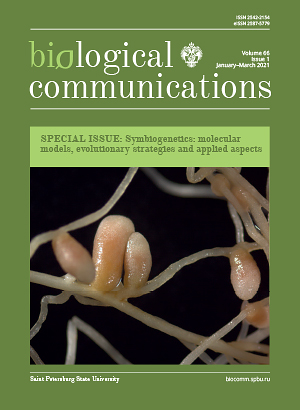New naturally transgenic plants: 2020 update
DOI:
https://doi.org/10.21638/spbu03.2021.105Abstract
Agrobacterium-mediated gene transfer leads to crown gall or hairy roots disease, due to expression of transferred T-DNA genes. Spontaneous plant regeneration from the transformed tissues can produce natural transformants carrying cellular T-DNA (cT-DNA) sequences of agrobacterial origin. In 2019, based on genomic sequencing data, cT-DNA horizontally transferred from Agrobacterium were found in two dozen species of angiosperms. This made it possible to evaluate the spread of this phenomenon, as well as make some generalizations regarding the diversity of horizontally transferred genes. The presented research is a continuation of work in this field. It resulted in the description of new naturally occurring transgenic species Aeschynomene evenia C. Wright, Eperua falcata Aubl., Eucalyptus cloeziana F.Muell., Boswellia sacra Flueck., Kewa caespitosa (Friedrich) Christenh., Pharnaceum exiguum Adamson, Silene noctiflora L., Nyssa sinensis Oliv., Vaccinium corymbosum L., Populus alba L. × Populus glandulosa Moench. The previously identified patterns regarding the frequency of the occurrence of natural transformants and the general properties of the cT-DNAs were confirmed in this study.
Keywords:
cT-DNA, horizontal gene transfer, naturally-transgenic plants
Downloads
References
Downloads
Published
How to Cite
License
Articles of Biological Communications are open access distributed under the terms of the License Agreement with Saint Petersburg State University, which permits to the authors unrestricted distribution and self-archiving free of charge.





